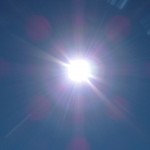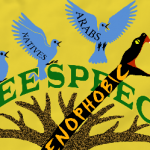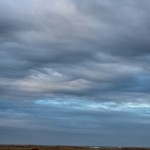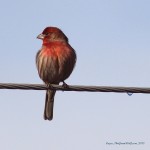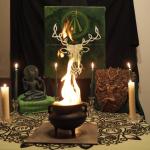Seasonal Occurrences
The longest night and day on earth occurs at the same time twice a year. Currently Borealis will be experiencing the longest day, while Australis will be experiencing the longest night. The reverse will occur half a year later.
During this time the earth is orientated with the Borealis Sol Axis being 90 degrees toward the sun. Making the turning view of the sun overhead with no shadows present at noon along this axis. In Borealis the days will be getting shorter hence forth, with the earth’s daily turning view of the sun moving southward; and for Australis the nights are at their longest with the daily turning view of the sun at its lowest along the north horizon. After this day the daily turning view of the sun with be moving higher southward.

Within the Borealis Polus Axis it is 24hrs of daylight and within the Australis polus Axis it is 24hrs of night.
Most regions south of the Borealis Polus Axis summer is in full effect with adult leaves upon the deciduous trees and the grasses green and tall. Most species would have offspring in toe or in their nests. Some species of birds would already have fledglings, such as crows and ravens. Fish fry from the autumn spawning would be in rivers and lakes. Insects would be abound with butterflies, bees and other pollinators being occupied with the flowers in season.
For the Tropics, this is when the Tropical Rain Belt is over the Borealis Sol Axis in the east and about to be in the west.

South of the Australis Sol Axis it is overall the driest, coldest, and darkest time of year.
Seasonal Customs
In Borealis, a number of regions in the temperate climes are celebrating fertility, usually in the form of match making such as rituals involving couples in search for fabled flowers (fern flower), jumping flames while holding hands, and publicly announcing your love. For both temperate and warmer climes bonfires and jumping over the resulting lower fires are popular.
Various activities in Borealis include: Staying up all night, making bonfires (either on hills or by water bodies), singing, dancing, gathering herbs (especially healing herbs), a break between the completion of spring sowing and the hard work of summer hay-making; rituals ensuring productivity of crops, as well as livestock fertility; fireworks, electing a Mock Mayor, mock marriages; burn the Mayday wreaths that were decorating doors in communal bonfires, boat rides; ritual bathing, decorating with greenery, street entertainment, water splashing pranks, swimming; wearing rainbow bracelets for several days and tossing them into a river; ceremonies for coming rains; maidens floating wreaths of flowers often lit with candles on rivers and possibly men catching them with hopes of gaining their interest; maidens gathering flowers all day coming back at nightfall with floral crowns to dance with love interests around a bonfire; said crowns being tossed onto houses – if remaining on roof a good harvest is foretold to come upon household, if the crown falls off death is foretold to befall member of household; jumping over burned down fires for purifying and health; and lighting a large round bale that is pushed down a hill in symbolism of the now shortening days to come.
In Australis, there are many traditions that involve staying up throughout the year’s longest night with anxiety that the next day would not come, and after several days observing that the winter was diminishing, celebration. Arid areas often are having their last harvest.
Various activities in Australis include: colorful costumes, peasant costumes, folk masks, sharing food, rituals for a good harvest, dancing, bonfires, fireworks, ceremonies revolving around the end of the rainy season, mock wedding whose bride and groom are the central attraction of the dancing, corn dishes, harvest festivities, marking half of antarctic tour duty at research station by redecorating, having team games and parties.
BOREALIS
|
CELEBRATION |
GENERAL DATE |
SPECIFIC DATE |
CALENDAR |
REGION OF ORIGIN |
CULTURE |
Midsummer |
Late June |
between June 21 and June 25 |
Europe |
European |
|
|
Late June |
from the 23rd of June to the 28th of June |
North Western Europe |
Cornish |
||
|
Late June |
the night of 23/24 June |
North Eastern Europe |
|||
|
Late June |
Summer Solstice |
Global |
Saegoah |
||
Jāņi |
Late June |
night of 23 June to 24 June |
North Eastern Europe |
||
Sânziană |
Late June |
June 24th |
Northern Regions of South Eastern Europe |
Romanian |
|
Tiregān |
Early July |
2nd or 3 July |
Western Asia |
Iranian |
AUSTRALIS
|
CELEBRATION |
GENERAL DATE |
SPECIFIC DATE |
CALENDAR |
REGION OF ORIGIN |
CULTURE |
|
Late June |
Winter Solstice |
Global |
Saegoah |
||
We Tripantu |
Late June |
between June 21 and June 24 |
Unknown |
Western South America |
Chilean |
Festa Junina |
June |
June 12 to June 29 |
North East South America |
Brazilian |
|
|
Late June |
June 24th |
Unknown |
Western South America |
Inca |
|
Maruaroa o Takurua |
Late June |
June 20 to June 22 |
Unknown |
Polynesia |
Māori |
Midwinter (Antarctica) |
Late June |
June 21 to a week following |
Antarctica |
Antarctic Scientists |



